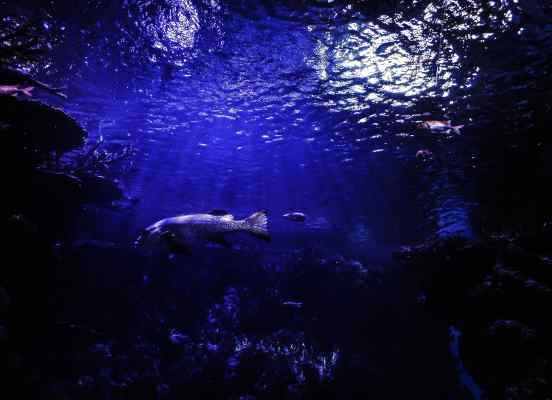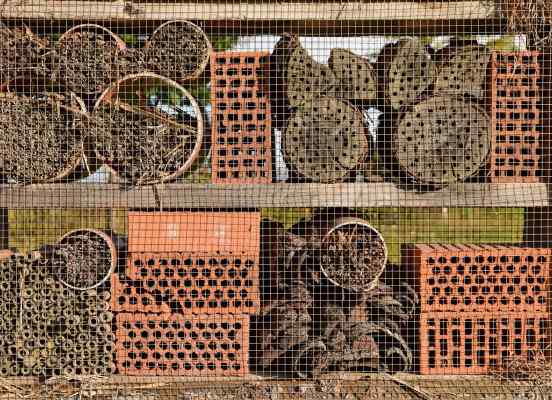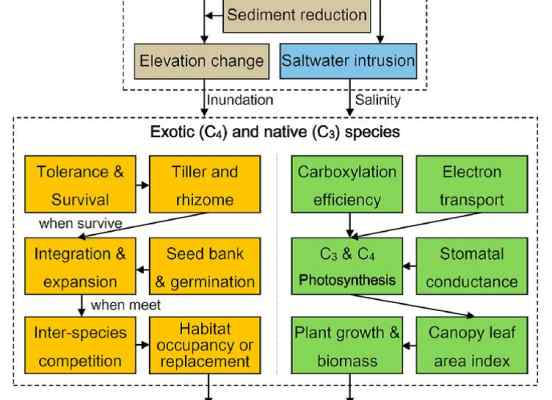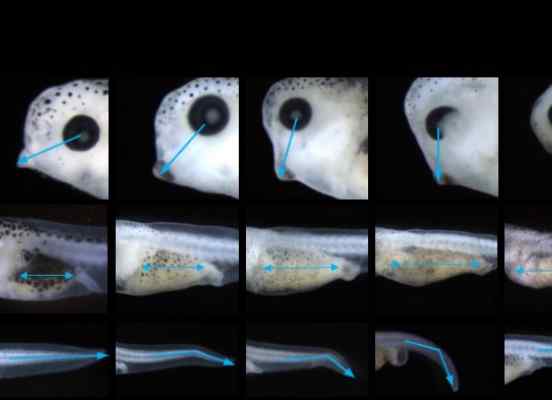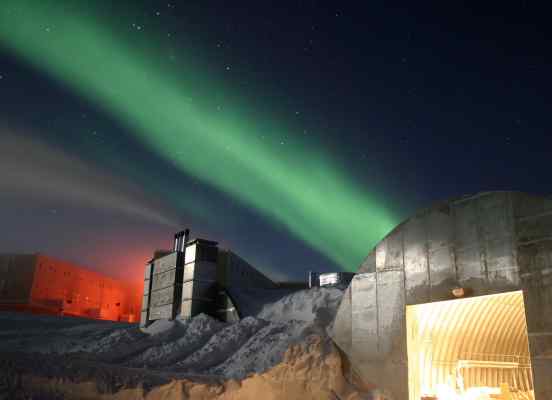Description
In order to appreciate any concept, including the Paleo Diet, it is important to recognize its history and how it came to be. Most of you are aware that Paleo and particularly Paleo diets have recently become very hot, on trend topics.
These ideas have become household words in the past few years; however it hasn’t always been this way. Below is a graph from Google Trends for the words “ the Paleo diet” (Figure 1). It’s fairly clear from Figure 1 that, except for the past four years, the Paleo diet was virtually unknown to all but dedicated fans. Fortunately, I’ve been in the middle of this worldwide movement from nearly its very beginnings. So, I can personally tell you how it all began and my involvement in it.

Last October, I approached my 64th birthday with just a little trepidation because I was part of the 60’s generation whose mantra was not to trust anyone over 30, and now I’m twice that age. As I look back over my life, I can pinpoint a few key events which led me to discover and appreciate what is now almost universally known as the Paleo diet.
I came of age as a track and field athlete at the University of Nevada, Reno in the late 60s and early 70s, and as such was always interested in diet, fitness and athletic performance. Later as a lifeguard at Lake Tahoe, my friends and I read all of the now classic vegetarian diet/health books such as Francis Moore Lappe’s Diet for a Small Planet, Paivo Airola’s Are You Confused? and Dick Gregory’s Natural Diet for Folks Who Eat among others. I even attended a Dick Gregory lecture in Seattle and got to shake this famous comedian’s hand.
My lifeguard friends and I experimented with vegan diets, fasting, and all kinds of vitamins and supplements. Almost everyone seemed to own a juicer. Each summer, instead of shying away from the sun and using sunscreens, we all tried to get the deepest tans possible. We swam in Tahoe’s icy, invigorating, non-chlorinated waters, and decades before Vibram Five Fingers and Nike Frees were the rage, we ran barefoot in the sand along Sand Harbor’s pristine shoreline.
Those 20 memorable summers as a lifeguard at Tahoe heightened my awareness of the outdoor, natural world, sunshine, health, fitness and diet. As my lifeguarding days drew to a close in 1991, Lorrie and I had just begun to eat Paleo. Here’s how it began.
THE START OF IT ALL
I completed my Ph.D. in exercise physiology at the University of Utah in the spring of 1981 and promptly hired as a young assistant professor in the Department of Health and Exercise Science at Colorado State University. For the first 5-10 years of my career, my research focused mainly upon how diet and exercise affected fitness and athletic performance. I still hadn’t discovered Paleo, but read widely and had a considerable interest in anthropology.
In the spring of 1987, I happened upon Boyd Eaton’s (M.D.) now classic scientific paper Paleolithic Nutrition: a Consideration of its Nature and Current Implications which was published two years earlier in the prestigious New England Journal of Medicine.7 This article made a lasting impression upon me and was the single factor which caused me to focus my research interests upon ancestral human diets from that point forward.
For me, one of the surprising points that Dr. Eaton made in a subsequent paper was that cereal grains were rarely or never consumed by pre-agricultural hunter-gatherers.6 In the days and months after reading Boyd’s groundbreaking paper,7 I became absolutely engrossed in studying ancestral human diets and voraciously read everything I could about the topic. At first, I simply filed all of these scientific papers and documents into a single file folder I labeled “Paleolithic Nutrition.” Early on I realized that this strategy wouldn’t work because of the enormous volume and diversity of topics that materialized.
As I read more and more, patterns began to emerge. Stone Age people did not drink milk or consume dairy products. So, I created a file folder labeled “Dairy.” They also didn’t eat cereal grains, so I created a single file folder called “Cereal Grains.” However, just like the single folder I had originally created for “Paleolithic Nutrition,” it soon became apparent that the topic of cereal grains and their potential for adversely affecting health was an enormous topic that ultimately would require a huge number of file folders.
Over the course of the next seven or eight years, I collected more than 25,000 scientific papers and filled five large filing cabinets – each with hundreds of categories dealing with all aspects of Paleo diet and Paleo lifestyle. In 1994, I eventually mustered enough courage to telephone (no one used email then) the man who was responsible for my collection of articles on anything and everything related to Paleo. Dr. Eaton is a true gentleman and scholar in every sense of the word. We spoke for almost an hour on that very first telephone call, and he gave me one of the greatest compliments of my life at the end of the conversation when he said, “It sounds to me like you know more about this than I do.”
Boyd and I eventually met in 1995, and two years later he invited me to speak with him at an international conference on fitness and diet organized by Dr. Artemis Simopoulos in Athens, Greece. Artemis was a wonderful hostess for the conference, and during my two week stay in Greece we had many conversations about diet and health. I mentioned that I had written a partially completed manuscript on the nutritional shortcomings of cereal grains. About a year later she asked me if I could complete the paper and submit it for publication in a scientific journal she edited. I did, and that paper, Cereal Grains: Humanity’s Double Edged Sword, published in 199934 launched my published career in Paleo diets.
The Paleo Diet concept is now taken seriously in the scientific world thanks in part to Boyd Eaton’s pioneering work. There is no doubt in my mind that without Dr. Eaton’s influential 1985 New England Journal of Medicine paper,7 Paleo would continue to be an obscure word known mainly to anthropologists and would not have become the household term now recognized by millions. The Paleo Diet and Paleo lifestyle are clearly much larger than either my writings or Boyd Eaton’s. Hundreds if not thousands of scientists, physicians and people from all walks of life are responsible for creating this incredibly powerful idea that can be used to bring order and wisdom to dietary and lifestyle questions and issues.
Some of the key players who came before Dr. Eaton in the Paleo diet and lifestyle world require no introductions. Charles Darwin’s Origins of the Species was published in 1859 and started it all. It still amazes me that the most powerful idea in all of biology (evolution via natural selection) generally had not been applied to nutritional thought until 126 years later with Dr. Eaton’s classic paper.7 Theodosius Dobzhansky, a well-known Ukranian evolutionary biologist said, “Nothing in biology makes sense, except under the light of evolution.” Indeed, his statement could easily be reworked to “Nothing in nutrition makes sense, except under the light of evolution.”5 A similar quote could also be applied to a multitude of lifestyle issues.
One way in which we can look at how and where the Paleo diet and Paleo lifestyle concepts arose would be to examine the contributions of a few of the key players who came both before and after Dr. Eaton’s landmark paper. Obviously, Charles Darwin started it all, but a number of noteworthy people had already recognized the value of ancestral dietary patterns decades before the publication of Boyd’s article.
Perhaps the very first book to achieve notoriety about non-western diets and disease was Weston Price’s Nutrition and Physical Degeneration, A Comparison of Primitive and Modern Diets and Their Effects, first published in 1939.23 Dr. Price, a U.S. dentist, extensively traveled the world in the 1920s and 30s and made detailed observations about diet and health in numerous non-westernized populations including Amazon Indians, Alaskan Eskimos, Australian Aborigines, Canadian Indians, Polynesians and African tribal populations among many others. This book is a real treasure and contains hundreds of photographs of non-westernized people in exquisite health taken in an era when modern processed foods were not universally available. Dr. Price noted that wherever and whenever modern diets were adopted by non-westernized cultures, their health declined. His statement was just as true then as it is today.
An intriguing aspect of early books like Dr. Price’s is that frequently the diet/health observations were correct but the underlying mechanisms about how diet and lifestyle specifically affected health were either unknown or poorly understood. In the early part of the 20th century before population wide vaccination programs existed, tuberculosis remained a major public health problem responsible for millions of deaths worldwide. In his book,23 Dr. Price noted that in Europe, heliotherapy (sunbathing) was being effectively used to treat tuberculosis. At the time and even decades later, these kinds of observations were commonly ridiculed by the “best medical minds” because they seemed ludicrous and had no known physiological basis. Let’s fast forward 65 years and put this 1930s observation under new light.
Discoveries made just in the past 5-7 years now show that sunlight exposure might be one of the best strategies to prevent or cure tuberculosis infections.10, 19, 27, 31, 35, 36 When you sunbathe, ultraviolet radiation from the sun causes vitamin D to be produced in your skin. The more sun you get, the more vitamin D is produced. Blood concentrations of vitamin D regulate the synthesis of a recently identified substance called cathelicidin which turns out to be one of the most potent antimicrobial (bacteria killing) peptides that our bodies produce. Cathelicidin shows specific killing activity against bacteria that cause tuberculosis,31, 35, 36 and epidemiological (population) studies confirm vitamin D insufficiency is a risk factor for tuberculosis.10, 19, 37 Most of us have been vaccinated against tuberculosis, so we really don’t need to worry about this disease.
Although Dr. Price’s book23 was advanced for its time, the evolutionary basis for optimal nutrition and healthy lifestyles still lay decades in the future. Other early popular books touching upon ancestral diets and health include: Arnold DeVries’s Primitive Man and His Food (1952),4Walter Voegtlin’s The Stone Age Diet (1975),30 Leon Chaitow’s, Stone Age Diet (1987),2 and Boyd Eaton’s The Paleolithic Prescription (1988).8
All of these books are long out of print and except for Boyd’s volume; these books simply fizzled and faded into obscurity because they didn’t have the bigger picture right. Without the evolutionary template correctly in place, these early books were incomplete and inconclusive. At the time, scientists and the public at large still weren’t quite ready for Paleo diets and Paleo lifestyles.
Prior to the publication of Dr. Eaton’s 1985 paper,7 a few scientists had independently recognized the evolutionary underpinnings for healthful diets and lifestyle, but their work was published in obscure scientific journals that received little or no public notoriety.1, 25, 26, 28, 29, 32, 37 After publication of Boyd Eaton’s influential paper in the New England Journal of Medicine,7 a number of events ultimately set the stage for the worldwide recognition of the Paleo diet as well as the evolutionary basis for modern day Paleo lifestyles.
THE DAWN OF DARWINIAN MEDICINE
The basic foundation and logic for the Paleo diet concept lies in a recently recognized discipline called Darwinian Medicine. Following in the footsteps of Boyd’s landmark paper,7 came another revolutionary scientific publication in the Quarterly Review of Biology (1991) by Drs. George Williams and Randy Neese from the State University of New York at Stony Brook.33 The title of this paper was, “The Dawn of Darwinian Medicine.”
As you can imagine from its title, it represented the very first scientific publication addressing how our ancestral evolutionary experience affects the manner in which we view and treat modern diseases. Although this paper is now more than 20 years old, its message is finally being filtered down to many physicians, their patients and the public at large.20
Here’s a quote from this paper that sums up Darwinian Medicine, “Human biology is designed for Stone Age conditions. Modern environments may cause many diseases.” Also, another enlightening quote that is totally relevant to this book: “it provides new insights into the causes of medical disorders.” For instance, cough, fever, vomiting, diarrhea, fatigue, pain, nausea and anxiety are widespread medical problems. Many orthodox physicians focus upon relieving short term distress by prescribing pharmaceuticals to block these responses. Darwinian Medicine would say these responses are not necessarily harmful, but rather signify the body’s effort to remedy a problem. In most situations coughing when you are sick is a natural and healthy response because it helps to purge disease causing microbes from your throat and lungs.
Similarly fever increases your body temperature which helps to destroy pathogens that have infected your body. Medications that suppress coughs and block fever may relieve symptoms but may actually prolong the illness. Obviously, certain extreme situations necessitate a balanced approach between our body’s evolutionary response to disease and modern medicine. For example, blocking fever can prevent febrile seizures and stopping vomiting can prevent severe dehydration.
The message is clear. We need to balance our hunter gatherer genetic legacy with the best technology of our modern world.
THE PROOF IS IN THE PUDDING
Having been a faculty member at a Division I Research University for 32 years, I can tell you that your personal experience with the Paleo diet and a dollar will buy you a single cup of coffee in the scientific community. In other words: no matter how much weight you have dropped on the Paleo diet; no matter how much your blood chemistry has improved; nor how much better you feel, the medical and scientific community will, by and large, not listen to you. Your real world experiences have little or no traction in the academic community of science and medicine. What they require is not your personal experience (anecdotal evidence), but rather experimental evidence based upon one of the following four scientific methods: 1) animal studies, 2) tissue or organ studies, 3) epidemiological [population] studies or 4) randomized controlled human trials.
When I first published The Paleo Diet in 2002 thousands of indirect experimental studies had supported its general principles in promoting weight loss, improving overall health and curing disease. For instance, a multitude of well controlled experimental studies had already confirmed beyond a shadow of a doubt that low glycemic load diets improved health and promoted weight loss. The Paleo diet is a low glycemic load diet. Similarly, high protein diets were shown to be the most effective strategy to improve blood chemistry and help you lose weight. Yet again, the Paleo diet is a high protein diet.
Even in 2002, when The Paleo Diet first came into print, you would have been hard pressed to find a single nutritionist who would disagree with the notion that omega 3 fats improved health and well being in almost every conceivable way. Do I need to repeat myself? The Paleo diet is a diet rich in omega 3 fats.
By 2002 when my first book came into print, the thousands of scientific papers were independently verified that certain individual aspects of the Paleo diet normalized body weight and improved health and wellbeing. Nevertheless, at that time, not a single study had yet examined all of the combined nutritional characteristics of the Paleo diet.
Was a diet high in animal protein, omega 3 fats, monounsaturated fats, vitamins, minerals, phytochemicals, fiber and low in salt, refined sugars, cereal grains, dairy products, vegetable oils and processed foods healthy? Was it more healthful than the officially sanctioned USDA My Plate Diet or even the highly touted Mediterranean diet? The direct scientific answers to these questions had yet to be answered in 2002.
Fortunately, in the past eight years a number of scientists worldwide have dared to test contemporary versions of humanity’s original diet against supposed “healthful diets” as seen in Table 1 below.
One of the key figures behind this ground breaking research is my friend and colleague, Dr. Staffan Lindeberg (M.D., Ph.D.) from Lund University in Sweden. Staffan became interested in Paleo diets almost 25 years ago through his medical studies of the Kitavans,14-17 a non-westernized group of 2,250 people living on remote islands near Papua New Guinea. The Kitavans obtain virtually all of their food from either the land or the sea and have little contact with the modern world. Common western foods such as cereals, dairy, refined sugars, vegetable oils and processed foods are nearly absent from their diets.14-17 Predictably, these people represent the epitome of health compared to the average citizen living in the western world. None of them are overweight, and heart disease and stroke are extremely rare. High blood pressure and type 2 diabetes are non-existent,14-17 and acne is not present among their children or teenagers.38 I doubt that you could round up a random group of 2,000 western people anywhere on the planet without encountering high rates of all of these diseases which are rare or not present in the Kitavans.
In the late 1990s I first began corresponding with Dr. Lindeberg on the then youthful internet. We soon discovered that we had read almost all of the same scientific papers and were interested in almost all of the same diet/health topics. One study that stood out to both of us was an incredible experiment performed by Dr. Kerin O’Dea at the University of Melbourne and published in the Journal, Diabetes in 1984.21 In this study Dr. O’Dea gathered together 10 middle aged Australian Aborigines who had been born in the “Outback.” They had lived their early days primarily as hunter-gatherers until they had no choice but to finally settle into a rural community with access to western goods. Predictably, all 10 subjects eventually became overweight and developed type 2 diabetes as they adopted western sedentary lifestyles in the community of Mowwanjum in the northern Kimberley region of Western Australia. However, inherent in their upbringing was the knowledge to live and survive in this seemingly desolate land without any of the trappings of the modern world.
Dr. O’Dea requested these 10 middle aged subjects to revert to their former lives as hunter-gatherers for a seven week period. All agreed and traveled back into the isolated land from which they originated. Their daily sustenance came only from native foods that could be foraged, hunted or gathered. Instead of white bread, corn, sugar, powdered milk and canned foods, they began to eat the traditional fresh foods of their ancestral past: kangaroos, birds, crocodiles, turtles, shellfish, yams, figs, yabbies (freshwater crayfish), freshwater bream and bush honey. At the experiment’s conclusion, the results were spectacular, but not altogether unexpected given what was known about Paleo diets, even then. The average weight loss in the group was 16.5 lbs; blood cholesterol dropped by 12% and triglycerides were reduced by a whopping 72%. Insulin and glucose metabolism became normal, and their diabetes effectively disappeared.
Dr. Lindeberg and I both realized that this type of experiment would probably never be repeated simply because the hunter-gatherer lifestyle is nearly extinct, and very few contemporary people have the knowledge or skills to live entirely off the land. Back in those early days of our friendship, we both had the same vision. This experiment should be conducted in a slightly different manner but not with westernized, former hunter-gatherers. Why not take a group of typically unhealthy westerners and put them on commonly available contemporary foods that mimic the nutritional characteristics of hunter-gatherer diets? Wow, what a great idea! We both knew that this experiment was precisely what Dr. Eaton had in mind with his inspirational paper way back in 1985.7
RECENT EXPERIMENTAL STUDIES OF THE PALEO DIET
It took nearly 22 years for Dr. Eaton’s dream of experimentally testing modern day Paleo diets to come true, but it finally happened with the publication of a paper by Dr. Lindeberg’s research group in 2007.18 Staffan followed this publication with two additional papers in 200911 and 2010.13Good ideas catch on, and two other independent research groups around the world followed suit with similar results – the first in 2008 by Dr. Osterdahl and co-workers at the Karolinska Institute in Sweden22 and the next in 2009 by my friend and colleague Dr. Lynda Frasseto (M.D.) from the University of California San Francisco School of Medicine.9
Although science may move slowly, it eventually does move forward as old ideas are replaced with new and better thoughts and information. I can assure you that this fundamental diet and lifestyle concept based upon evolutionary biology is not a fad and will not fade away.
In his first study in 200718 Dr. Lindeberg and associates placed 29 patients with type 2 diabetes and heart disease on either a Paleo diet or a Mediterranean diet based upon whole grains, low-fat dairy products, vegetables, fruits, fish, oils, and margarines. Note the Paleo diet excludes grains, dairy products, and margarines while encouraging greater consumption of meat and fish. After 12 weeks on either diet blood glucose tolerance (a risk factor for heart disease) improved in both groups, but was better in the Paleo dieters.
In a 2010 follow-up publication,18 of this same experiment the Paleo diet was shown to be more satiating on a calorie by calorie basis than the Mediterranean diet because it caused greater changes in leptin, a hormone which regulates appetite and bodyweight.
In the second ever study (2008) of Paleo diets, Dr. Osterdahl and co-workers put 14 healthy subjects on a Paleo diet. After only three weeks the subjects lost weight, reduced their waist size and experienced significant reductions in blood pressure, and plasminogen activator inhibitor (a substance in blood which promotes clotting and accelerates artery clogging). Because no control group was employed in this study, some scientists would argue that the beneficial changes might not necessarily be due to the Paleo diet. However, as you shortly will see, a better controlled experiment showed similar results.
In 2009, Dr. Frasetto and co-workers put nine inactive subjects on a Paleo diet for just 10 days.9 In this experiment, the Paleo diet was exactly matched in calories with the subjects’ usual diet. Almost anytime people eat diets that are calorically reduced, no matter what foods are involved, they exhibit beneficial health effects. So the beauty of this experiment was that any therapeutic changes in the subjects’ health could not be credited to reductions in calories, but rather to changes in the types of food eaten. While on the Paleo diet either eight or all nine participants experienced improvements in blood pressure, arterial function, insulin, total cholesterol, LDL cholesterol and triglycerides. What is most amazing about this experiment is how rapidly so many markers of health improved, and that they occurred in every single patient.
In an even more convincing recent (2009) experiment, Dr. Lindeberg and colleagues compared the effects of a Paleo diet to a diabetes diet generally recommended for patients with type 2 diabetes.11 The diabetes diet was intended to reduce total fat by increasing whole grain bread and cereals, low fat dairy products, fruits and vegetables while restricting animal foods. In contrast, the Paleo diet was lower in cereals, dairy products, potatoes, beans, and bakery foods, but higher in fruits, vegetables, meat, and eggs compared to the diabetes diet. The strength of this experiment was its cross over design in which all 13 diabetes patients first ate one diet for three months and then crossed over and ate the other diet for three months. Compared to the diabetes diet, the Paleo diet resulted in improved weight loss, waist size, blood pressure, HDL cholesterol, triglycerides, blood glucose and hemoglobin A1c (a marker for long term blood glucose control). From an experimental design perspective, this trial represents a powerful example of the Paleo diet’s effectiveness in treating people with serious health problems.
From 2007 until 2010 only five experimental studies tested contemporary “Paleo” diets in humans (Table 1). However since then, interest in experimentally testing these diets has grown concurrently (Table 1) with the general public’s explosive awareness of the Paleo Diet concept (Figure 1). Except for a single study, human trials testing modern day Paleo Diets have shown them to be therapeutic and generally more effective in reducing body weight and ameliorating symptoms of the metabolic syndrome (Table 1) than conventional western diets, type 2 diabetic diets, the Mediterranean diet, and the American Heart Association (AHA) diet (Table 1). Further, contemporary “Paleo diets” are nutritionally more dense in the 13 vitamins and minerals most lacking in the typical U.S. diet when contrasted to the USDA my Plate recommendations,39, 40 the Mediterranean diet, and vegan/vegetarian diets.
Table 1. Paleo Diet References: Direct Human/Animal Experimental and Epidemiological Studies in chronological order (oldest to most recent).
______________________________________________________________________________
1984
O’Dea K: Marked improvement in carbohydrate and lipid metabolism in diabetic Australian aborigines after temporary reversion to traditional lifestyle. Diabetes 1984, 33(6):596-603.
2006
Jonsson T, Ahren B, Pacini G, Sundler F, Wierup N, Steen S, Sjoberg T, Ugander M, Frostegard J, Goransson Lindeberg S: A Paleolithic diet confers higher insulin sensitivity, lower C-reactive protein and lower blood pressure than a cereal-based diet in domestic pigs. Nutr Metab (Lond) 2006, 3:39.
2007
Lindeberg S, Jonsson T, Granfeldt Y, Borgstrand E, Soffman J, Sjostrom K, Ahren B: A Palaeolithic diet improves glucose tolerance more than a Mediterranean-like diet in individuals with ischaemic heart disease. Diabetologia 2007, 50(9):1795-1807.
2008
Osterdahl M, Kocturk T, Koochek A, Wandell PE: Effects of a short-term intervention with a paleolithic diet in healthy volunteers. Eur J Clin Nutr 2008, 62(5):682-685.
2009
Jönsson T, Granfeldt Y, Ahrén B, Branell UC, Pålsson G, Hansson A, Söderström M, Lindeberg S. Beneficial effects of a Paleolithic diet on cardiovascular risk factors in type 2 diabetes: a randomized cross-over pilot study. Cardiovasc Diabetol. 2009;8:35
Frassetto LA, Schloetter M, Mietus-Synder M, Morris RC, Jr., Sebastian A: Metabolic and physiologic improvements from consuming a paleolithic, hunter-gatherer type diet. Eur J Clin Nutr 2009.
2010
Jonsson T, Granfeldt Y, Erlanson-Albertsson C, Ahren B, Lindeberg S. A Paleolithic diet is more satiating per calorie than a Mediterranean-like diet in individuals with ischemic heart disease. Nutr Metab (Lond). 2010 Nov 30;7(1):85
2013
Carter P, Achana F, Troughton J, Gray LJ, Khunti K, Davies MJ. A Mediterranean diet improves HbA1c but not fasting blood glucose compared to alternative dietary strategies: a network meta-analysis. J Hum Nutr Diet. 2014 Jun;27(3):280-97
Jönsson T, Granfeldt Y, Lindeberg S, Hallberg AC.Subjective satiety and other experiences of a Paleolithic diet compared to a diabetes diet in patients with type 2 diabetes. Nutr J. 2013 Jul 29;12:105. doi: 10.1186/1475-2891-12-105.
Ryberg M, Sandberg S, Mellberg C, Stegle O, Lindahl B, Larsson C, Hauksson J, Olsson T. A Palaeolithic-type diet causes strong tissue-specific effects on ectopic fat deposition in obese postmenopausal women. J Intern Med. 2013 Jul;274(1):67-76
Frassetto LA, Shi L, Schloetter M, Sebastian A, Remer T. Established dietary estimates of net acid production do not predict measured net acid excretion in patients with Type 2 diabetes on Paleolithic-Hunter-Gatherer-type diets. Eur J Clin Nutr. 2013 Sep;67(9):899-903
2014
Fontes-Villalba M, Jönsson T, Granfeldt Y, Frassetto LA, Sundquist J, Sundquist K, Carrera-Bastos P, Fika-Hernándo M, Picazo Ó, Lindeberg S. A healthy diet with and without cereal grains and dairy products in patients with type 2 diabetes: study protocol for a random-order cross-over pilot study–Alimentation and Diabetes in Lanzarote–ADILAN.Trials. 2014 Jan 2;15:2. doi: 10.1186/1745-6215-15-2.
Bisht B, Darling WG, Grossmann RE, Shivapour ET, Lutgendorf SK, Snetselaar LG, Hall MJ, Zimmerman MB, Wahls TL. A multimodal intervention for patients with secondary progressive multiple sclerosis: Feasibility and effect on fatigue. J Altern Complement Med. 2014 Jan 29. [Epub ahead of print]
Mellberg C, Sandberg S, Ryberg M, Eriksson M, Brage S, Larsson C, Olsson T, Lindahl B. Long-term effects of a Palaeolithic-type diet in obese postmenopausal women: a 2-year randomized trial. Eur J Clin Nutr. 2014 Mar;68(3):350-7.
Smith, M, Trexler E, Sommer A, Starkoff B, Devor S.teven (2014) Unrestricted Paleolithic Diet is associated with unfavorable changes to blood lipids in healthy subjects. Int J Exer Sci 2014, 7(2) : 128-139.
Talreja D, Buchanan H, Talreja R, Heiby L, Thomas B, Wetmore J, Pourfarzib R, Winegar D. Impact of a Paleolithic diet on modifiable CV risk factors. Journal of Clinical Lipidology, Volume 8, Issue3, Page 341, May 2014.
Boers I, Muskiet FA, Berkelaar E, Schur E, Penders R, Hoenderdos K, Wichers HJ, Jong MC. Favourable effects of consuming a Palaeolithic-type diet on characteristics of the metabolic syndrom. A randomized controlled pilot-study. Lipids Health Dis. 2014 Oct 11;13:160. doi: 10.1186/1476-511X-13-160.
Stomby A, Simonyte K, Mellberg C, Ryberg M, Stimson RH, Larsson C, Lindahl B, Andrew R, Walker BR, Olsson T. Diet-induced weight loss has chronic tissue-specific effects on glucocorticoid metabolism in overweight postmenopausal women. Int J Obes (Lond). 2014 Oct 28. doi: 10.1038/ijo.2014.188. [Epub ahead of print]
Whalen KA, McCullough M, Flanders WD, Hartman TJ, Judd S, Bostick RM. Paleolithic and mediterranean diet pattern scores and risk of incident, sporadic colorectal adenomas. Am J Epidemiol. 2014 Dec 1;180(11):1088-97. doi: 10.1093/aje/kwu235. Epub 2014 Oct 17.
Toth C, Clemens Z. Type 1 diabetes mellitus successfully managed with the Paleolithic ketogenic diet. Int J Case Pep Images. 2014 5(10):699-703.
2015
Talreja A, Talreja S, Talreja R,Talreja D. The VA Beach Diet Study: An investigation of the effects of plant-based, Mediterranean, Paleolithic, and Dash Diets on cardiovascular disease risk. J Am Coll Cardiol Intv. 2015;8(2_S):S41-S41. doi:10.1016/j.jcin.2014.12.161
Bligh HF, Godsland IF, Frost G, Hunter KJ, Murray P, MacAulay K, Hyliands D, Talbot DC, Casey J, Mulder TP, Berry MJ.Plant-rich mixed meals based on Palaeolithic diet principles have a dramatic impact on incretin, peptide YY and satiety response, but show little effect on glucose and insulin homeostasis: an acute-effects randomised study.Br J Nutr. 2015 Feb 28;113(4):574-84.
London DS, Beezhold B. A phytochemical-rich diet may explain the absence of age-related decline in visual acuity of Amazonian hunter-gatherers in Ecuador. Nutr Res. 2015 Feb;35(2):107-17.
Masharani U, Sherchan P, Schloetter M, Stratford S, Xiao A, Sebastian A, Nolte Kennedy M, Frassetto L. Metabolic and physiologic effects from consuming a hunter-gatherer (Paleolithic)-type diet in type 2 diabetes. Eur J Clin Nutr. 2015 Apr 1. doi: 10.1038/ejcn.2015.39. [Epub ahead of print]
Tóth, C, and Zsófia, C. “Gilbert’s Syndrome successfully treated with the Paleolithic ketogenic diet.” Am J Med Case Reports. 2015 3(4). http://pubs.sciepub.com/ajmcr/3/4/9/
Pastore RL, Brooks JT, Carbone JW. Paleolithic nutrition improves plasma lipid concentrations of hypercholesterolemic adults to a greater extent than traditional heart-healthy dietary recommendations. Nutr Res. 2015; 35:474-479.
______________________________________________________________________________
REFERERNCES
[1]Abrams, HL. The relevance of Paleolithic diet in determining contemporary nutritional needs. J Applied Nutr 1979;31: 43-59.
[2]Chaitow, L. Stone Age Diet. London, Macdonal & Co. (Publishers) Ltd., 1987.
[3]Cordain L, Lindeberg S, Hurtado M, Hill K, Eaton SB, Brand-Miller J. Acne vulgaris: a disease of Western civilization. Arch Dermatol. 2002 Dec;138(12):1584-90.
[4]DeVries, A. Primitive Man and His Food. Chicago, Chandler Book Company, 1952.
[5]Dobzhansky T. Am Biol Teacher. 1973 March; 35:125-129.
[6]Eaton SB, et al. Stone agers in the fast lane: chronic degenerative diseases in evolutionary perspective. Am J Med 1988;84:739-49.
[7]Eaton SB, Konner M. Paleolithic nutrition. A consideration of its nature and current implications. N Engl J Med 1985;312:283-9.
[8]Eaton SB, Shostak M, Konner M. The Paleolithic Prescription. New York, Harper & Row, 1988.
[9]Frassetto LA, Schloetter M, Mietus-Synder M, Morris RC, Jr., Sebastian A: Metabolic and physiologic improvements from consuming a paleolithic, hunter-gatherer type diet. Eur J Clin Nutr 2009.
[10]Ho-Pham LT, Nguyen ND, Nguyen TT, Nguyen DH, Bui PK, Nguyen VN, Nguyen TV. Association between vitamin D insufficiency and tuberculosis in a Vietnamese population. BMC Infect Dis. 2010 Oct 25;10:306.
[11]Jönsson T, Granfeldt Y, Ahrén B, Branell UC, Pålsson G, Hansson A, Söderström M, Lindeberg S. Beneficial effects of a Paleolithic diet on cardiovascular risk factors in type 2 diabetes: a randomized cross-over pilot study. Cardiovasc Diabetol. 2009;8:35
[12]Jonsson T, Ahren B, Pacini G, Sundler F, Wierup N, Steen S, Sjoberg T, Ugander M, Frostegard J, Goransson Lindeberg S: A Paleolithic diet confers higher insulin sensitivity, lower C-reactive protein and lower blood pressure than a cereal-based diet in domestic pigs. Nutr Metab (Lond) 2006, 3:39.
[13]Jonsson T, Granfeldt Y, Erlanson-Albertsson C, Ahren B, Lindeberg S. A Paleolithic diet is more satiating per calorie than a Mediterranean-like diet in individuals with ischemic heart disease. Nutr Metab (Lond). 2010 Nov 30;7(1):85
[14]Lindeberg S, Lundh B: Apparent absence of stroke and ischaemic heart disease in a traditional Melanesian island: a clinical study in Kitava. J Intern Med 1993, 233(3):269-275.
[15]Lindeberg S, Nilsson-Ehle P, Terént A, Vessby B, Scherstén B. Cardiovascular risk factors in a Melanesian population apparently free from stroke and ischaemic heart disease: the Kitava study. J Intern Med. 1994 Sep;236(3):331-40.
[16]Lindeberg S, Berntorp E, Carlsson R, Eliasson M, Marckmann P. Haemostatic variables in Pacific Islanders apparently free from stroke and ischaemic heart disease–the Kitava Study. Thromb Haemost. 1997 Jan;77(1):94-8.
[17]Lindeberg S, Eliasson M, Lindahl B, Ahrén B: Low serum insulin in traditional Pacific Islanders–the Kitava Study. Metabolism 1999, 48(10):1216-1219.
[18]Lindeberg S, Jonsson T, Granfeldt Y, Borgstrand E, Soffman J, Sjostrom K, Ahren B: A Palaeolithic diet improves glucose tolerance more than a Mediterranean-like diet in individuals with ischaemic heart disease. Diabetologia 2007, 50(9):1795-1807.
[19]Nnoaham KE, Clarke A. Low serum vitamin D levels and tuberculosis: a systematic review and meta-analysis. Int J Epidemiol. 2008 Feb;37(1):113-9.
[20]Nesse RM, Stearns SC, Omenn GS. Medicine needs evolution. Science 2006;311:1071.
[21]O’Dea K: Marked improvement in carbohydrate and lipid metabolism in diabetic Australian aborigines after temporary reversion to traditional lifestyle. Diabetes 1984, 33(6):596-603.
[22]Osterdahl M, Kocturk T, Koochek A, Wandell PE: Effects of a short-term intervention with a paleolithic diet in healthy volunteers. Eur J Clin Nutr 2008, 62(5):682-685.
[23]Price WA. Nutrition and physical degeneration; a comparison of primitive and modern diets and their effects. P.B. Hoeber, Inc., New York, 1939.
[24]Pritchard JK. How we are evolving. Sci Am. 2010 Oct;303(4):40-47.
[24]Shatin R. Man and his cultigens. Scientific Australian 1964;1:34-39
[26]Shatin R. The transition from food-gathering to food-production in evolution and disease. Vitalstoffe Zivilisationskrankheitein 1967;12:104-107.
[27]Talat N, Perry S, Parsonnet J, Dawood G, Hussain R. Vitamin d deficiency and tuberculosis progression. Emerg Infect Dis. 2010 May;16(5):853-5.
[28]Truswell AS. Diet and nutrition of hunter-gatherers. In: Health and disease in tribal societies. New York: Elsevier; 1977:213-21.
[29]Truswell AS. Human Nutritional Problems at Four Stages of Technical Development. Reprint. Queen Elizabeth College (University of London), Inaugural Lecture, May, 1972.
[30]Voegtlin, WL. The Stone Age Diet. New York, Vantage Press, 1975.
[31]Yamshchikov AV, Kurbatova EV, Kumari M, Blumberg HM, Ziegler TR, Ray SM, Tangpricha V. Vitamin D status and antimicrobial peptide cathelicidin (LL-37) concentrations in patients with active pulmonary tuberculosis. Am J Clin Nutr. 2010 Sep;92(3):603-11.
[32]Yudkin, J. Archaeology and the nutritionist. In: The Domestication and Exploitation of Plants and Animals, PJ Ucko, GW Dimbleby (Eds.), Chicago, Aldine Publishing Co, 1969, pp. 547-552.
[33]Williams GC, Nesse RM. The dawn of Darwinian medicine. Q Rev Biol. 1991 Mar;66(1):1-22.
[34]Cordain L. Cereal grains: humanity’s double edged sword. World Review of Nutrition and Dietetics. 1999;84:19-73.
[35]Afsal K, Harishankar M, Banurekha VV, Meenakshi N, Parthasarathy RT, Selvaraj P.Effect of 1,25-dihydroxy vitamin D3 on cathelicidin expression in patients with and without cavitary tuberculosis. Tuberculosis (Edinb). 2014 Dec;94(6):599-605.
[36]Selvaraj P. Vitamin D, vitamin D receptor, and cathelicidin in the treatment of tuberculosis. Vitam Horm. 2011;86:307-25.
[37]Abrams HL. A dischronic perview of wheat in hominid nutrition. J Appl Nutr 1978;30:41-43.
[38]Cordain L, Lindeberg S, Hurtado M, Hill K, Eaton SB, Brand-Miller J. Acne vulgaris: A disease of civilization. Arch Dermatol. 2002;138: 1584-90.
[39]Cordain L. The nutritional characteristics of a contemporary diet based upon Paleolithic food groups. J Am Neutraceut Assoc 2002; 5:15-24.
[40]Cordain L, Eaton SB, Sebastian A, Mann N, Lindeberg S, Watkins BA, O’Keefe JH, Brand-Miller J. Origins and evolution of the western diet: Health implications for the 21st century. Am J Clin Nutr 2005;81:341-54.
Areas of research
- Estuarine Evolution
- Coastal Dynamic Geomorphology
- Estuarine Sediment Dynamics


